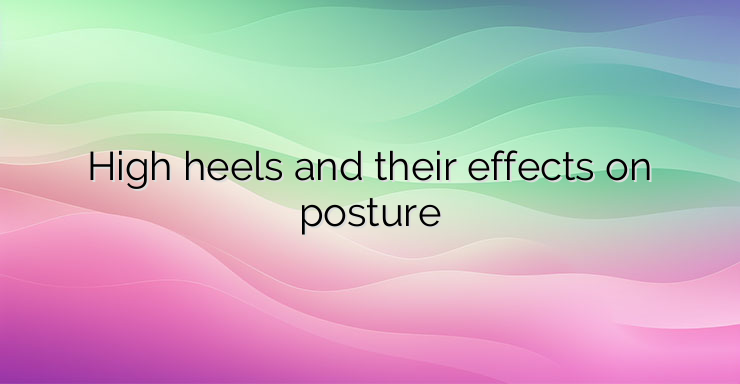Women who don’t own even one pair of high-heeled shoes are probably the only ones. Most not only have one, but even a whole set of gear. According to experts, wearing high-heeled shoes has both its many negative effects and some positive aspects. Shoes with too high a heel and a large curve pose some risks not only to the feet, but also to other parts of the body. And they extend far beyond stumbling. The reason is that the leg does not have enough support, especially if the current is thin. Wearing heels all day causes soreness, most often in the lower back, which may not only not subside after removing the shoes, but may last for hours or even days. Some shoes can be uncomfortable to the point that they compress the foot to the point that it also negatively affects blood circulation in the lower body. In the case of enlarged (varicose) veins, it is recommended to wear high shoes as rarely as possible, to emphasize those with a thicker heel to provide greater support, as well as to change to sneakers more often. After wearing them for a long time, a sharp pain appears in the pads, heels or toes. It can intensify if a person does not wear orthopedic insoles with them or does not replace them with lower ones. The wearing of orthopedic insoles should also be temporary or incidental – as needed. The reason is that the musculature begins to relax if there is a factor that helps it. Therefore, even with long wearing – more than 6 months duration, every day – the end result is often a worsening of the condition. One cannot fail to mention the increased risk of accidents. Walking in high shoes, especially with the condition of sidewalks and streets, is often a challenge. Women risk going home with a sprained ankle if they are not careful enough. In addition, a fall can lead to twisted ligaments, sprains and even fractures. The correlation between current height and risk is directly proportional. Another complication is the pain in the front part of the feet or the so-called. metatarsalgia. It covers the area at the base of the toes and under the pads of the foot, i.e. the top of the foot. The complaint is caused by the compression of the nerves that pass between the bones in the area. This unlocks the burning pain, which may be accompanied by numbness. Most often, the condition is due to a drop in the transverse arch of the foot. Regular wearing of high shoes, along with frequent incorrect posture, begins to affect the physiological curves of the spine. Lumbar lordosis may increase as well as thoracic kyphosis. In addition, the risk for functional scoliosis is increased. The good news is that they are reversible and with a change in habits as well as exercise can quickly return to the original correct posture. The high heel also damages the tendons of the legs, especially the Achilles. In practice, it shortens,which impairs the functionality of the triceps muscle (calf). How to choose shoes? No matter how much you love high heels, you’ll need to choose more modest proportions if you want to wear them often. According to experts’ recommendations, the current should not exceed 4 cm if it is for everyday wear. This height reduces the load on the spine. Shoes with platforms that provide the desired height are suitable, but the difference between the toes and the heel is about 3-4 cm, which is an absolutely acceptable norm. Shoes made of artificial materials are much rougher, which takes significantly longer to fit the foot. Usually such heels kill more and lead to the formation of calluses. Experts advise to buy shoes made of natural suede and leather.


Leave a Reply